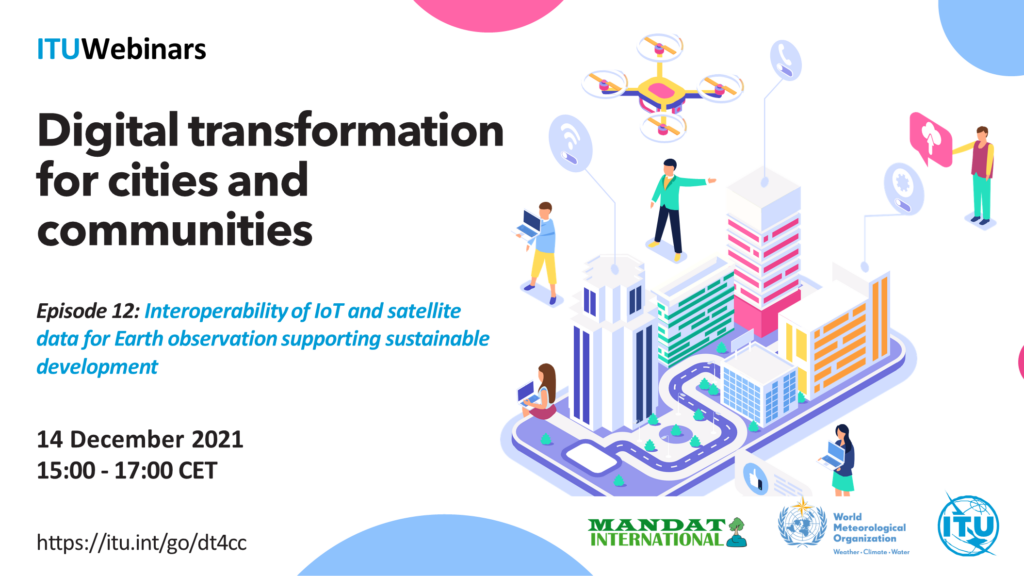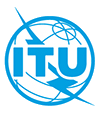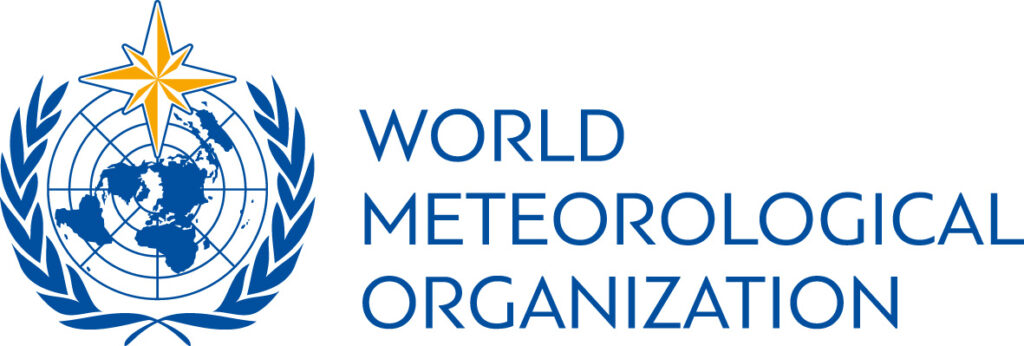Episode #12: Interoperability of IoT and satellite data for Earth observation supporting sustainable development

The emergence of technologies for Earth Observation (EO) such as Internet-of-Things (IoT) promises to provide new advances in data collection for the Sustainable Development Goals, including in the fields of climate change mitigation, biodiversity monitoring, poverty alleviation or smart agriculture.
As part of the ITU Webinars series on Digital transformation for cities and communities, International Telecommunication Union (ITU), together with Mandat International and World Meteorological Organization (WMO), organized the Episode 12 on “IoT for Interoperability of IoT and satellite data for Earth observation supporting sustainable development” on 14 December 2021 from 15:00 to 17:00 CEST. This episode brought together international experts from ITU, WMO, ECMWF, UNEP, OGC and Mandat International, and provided a platform to present the results from the NGIOT research project and to discuss existing perspectives and challenges in the field.
Currently, one of the challenges is to set global standards for interoperability of data coming from very different sources to facilitate their use for information services in above mentioned fields. Indeed, the lack of interoperable integration of different Earth observation data and applications remains an important barrier to be addressed in this domain. With over 50 billion IoT devices deployed, there is a need to facilitate the integration of existing IoT data with more standard Earth observation data.
While Earth observation – in situ and satellite – benefits more and more from common data models and standards, it is still difficult to combine those datasets with other data sources such as smart city open data, IoT, and smartphone sensor data.
Throughout the different presentations, the speakers discussed the latest considerations, current work, and future considerations for IoT and satellite observation. We tried to identify the challenges to be addressed from IoT research and IoT standardization perspectives. The presentations was followed by a panel discussion and interactions with the audience.
Note: The views and opinions expressed by the presenters during this event are solely those of the individual speakers and do not necessarily represent, reflect, or constitute the official stance, policy, or position of the International Telecommunication Union (ITU) or its secretariat.
Programme
15:00 – 15:05 Opening Remarks
- Anthony Rea, Director of the Infrastructure Department, WMO
- Nasser Al Marzouqi, Chairman of ITU-T Study Group 20, ITU
15:05 – 16:05 Session 1: International Research and Innovation Challenges and Opportunities
Moderator: Vadim Nozdrin, Counsellor, ITU
- Kenneth Holmlund, Head of Space Systems and Utilization, World Meteorological Organization (WMO): “The WMO Integrated Global Observing Systems and the value of satellite data” [Presentation]
- Erik Andersson, National Expert to the EC, European Centre for Medium-Range Weather Forecasts (ECMWF): “Interoperability of IoT and satellite data for Earth observation supporting sustainable development“ [Presentation]
- Gregory Giuliani, Head of the Digital Earth Unit and Swiss Data Cube Project Leader, GRID-Geneva of the United Nations Environment Programme (UNEP) and a Senior Lecturer,University of Geneva’s Institute for Environmental Sciences: “Swiss Data Cube EO| Open Science for Environmental Monitoring” [Presentation]
Questions & Answers
16:05 – 16:55 Session 2: Solving the Interoperability and Standardization Gaps
Moderator: Sébastien Ziegler, Director General, Mandat International
- Nadine Alameh, CEO, Open Geospatial Consortium (OGC): “Solving the Interoperability and Standardization Gaps Collective problem solving with geospatial” [Presentation]
- Dominique Berod, Head, Earth System Monitoring Division, World Meteorological Organization (WMO): “Solving the Interoperability and Standardization Gaps: WMO approach” [Presentation]
Questions & Answers
16:55 – 17:00 Closing Remarks
- Sébastien Ziegler, Director General, Mandat International


